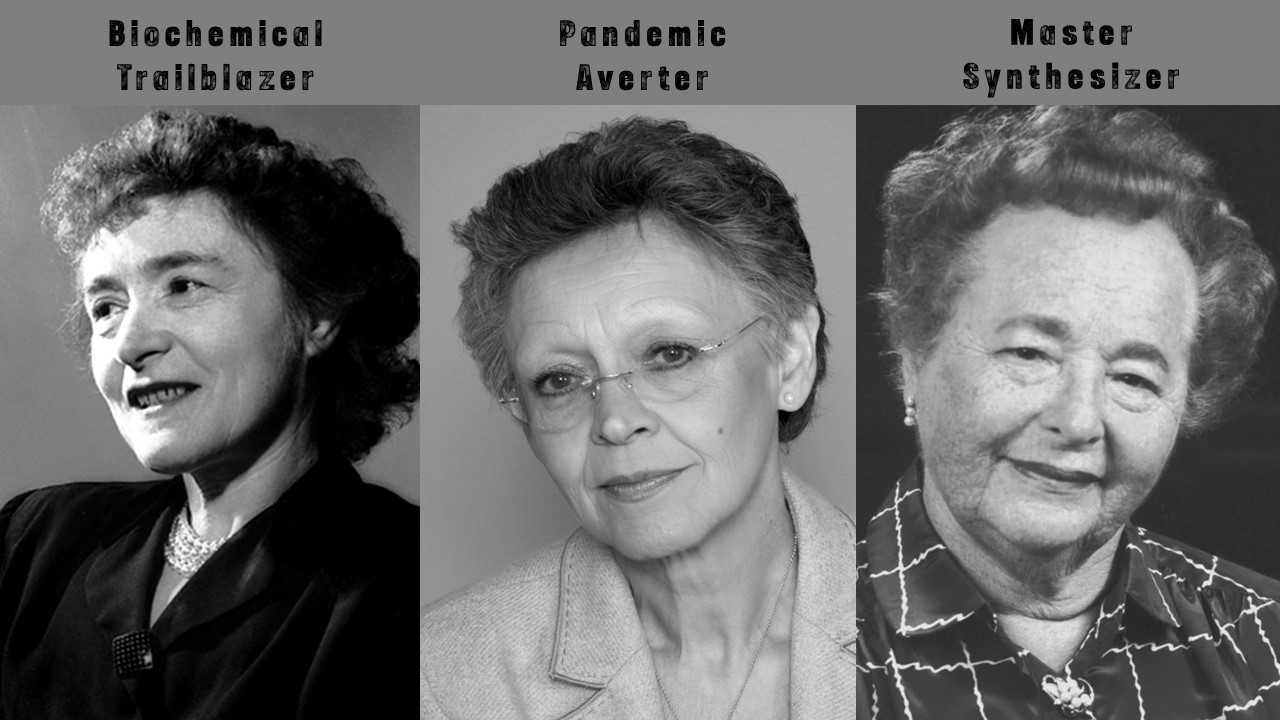March is women’s history month and the International Women’s Day is March 8th. During this time, it is important to remember the historic exclusion of women from science, and the progress we have made so far in the pursuit of being more inclusive. Equally significant is to acknowledge that the work is not yet complete: much more remains to be done to encourage participation in science, and to break down the barriers and biases that prevent it. After all, if the sciences reflect the questions we ask about the natural world, shouldn’t everyone get to ask them? If science mirrors society’s best thinking, we need to appreciate that a big part of that thinking should be women’s.
A History of Exclusion
For most of modern history, science has been a field dominated by men. Disappointingly, this has led to entrenched biases – both active and passive. We remember Darwin for his foundational role in developing the theory of evolution. But do we remember his thoughts on the abilities of women – expressed by words such as: “the chief distinction in the intellectual powers of the two sexes is [shown] by man attaining to a higher eminence, in whatever he takes up, than woman can attain”?
Lines of thought such as these were not isolated, nor are they confined to the distant past. We remember Marie Curie as the first woman to receive a Nobel Prize. The story of how the Royal Swedish Academy of Sciences intended to only award the prize to her husband, Pierre Curie, and Henri Becquerel rather than all three of them, before Pierre protested the decision to not decorate all three of them, is less known.
Better known is the controversy surrounding the characterization of DNA. The molecule had remained elusive to scientists for decades, with no clear description of its structure being published. Enter Rosalind Franklin – and her male co-worker, Maurice Wilkins. Franklin pioneered X-Ray crystallography methods to obtain images and data on the molecular structure of DNA. This data was pivotal for Francis Crick and James Watson’s own efforts to discover the structure of DNA. However, her critical work was not cited when Watson and Crick published their now famous double helix model. It is likely that Franklin herself was not even fully aware of how much Watson and Crick relied on her own data, before she died of ovarian cancer in 1958. The Nobel prize for the discovery of the structure of DNA went to Crick, Watson and Wilkins in 1962: Franklin was excluded, even though there was no prohibition against posthumous prizes.
Franklin’s story is not uncommon: the discussion over whether her exclusion from the prize or the little credit she received from her male peers was motivated by sexism continues to this day. Yet it is hard to see sexism as an unrelated phenomenon to her struggle when one considers the continuously misogynist and racist comments James Watson has made in public discourse up until recent years. At one of Franklin’s lectures, Watson was more preoccupied with commenting on her appearance and her avoidance of her “feminine qualities”, rather than taking notes on the numbers he needed to finish his models – which he later got in one of Franklin’s reports, anyway. In 2014, he became the first Nobel laureate to sell his prize after the scientific community finally ostracized him over his plainly unacceptable views.
The Representation Problem
These lessons from the earlier days of science serve as reminders of what happens when bias and prejudice go unchecked and become entrenched. This is the history of women in science: contributing to the betterment of the world, often in an environment set up against them. Progress has been made since the 20th century – but not at a quick pace. The UNESCO Institute of Statistics (UIS) estimates that less than 30% of researchers are women. Even though this figure is low, only 12% of scientific Nobel prizes have been awarded to women between 2016-2020 – a figure that does not come close to either the percentage of women in society, nor science. These numbers are not reflective of a lack of ability or interest from women’s part – although we do need to do more to encourage that interest. Statistics show a clear trend of decreasing participation by women in science as the level of seniority rises: from 38% of PhD students in the EU being women, to 11% of academic grade A personnel.
An early career in research is vastly challenging to build – with long hours and low compensation, and an expectation of extreme dedication. This, coupled with the societal expectations we heap on women, such as the burden of domestic duties and family life, often makes the proposition of such a career impossible. Indeed, these burdens have long supported male researchers – one is reminded of the wife of Albert Einstein, Milena Maric. She was also a physicist, and may have even contributed to his own breakthroughs. Yet letters reveal they jointly took the decision to publish only under his name so he could build a career to support both of them. More controversially, letters also reveal the stringent domestic expectations Einstein had of his partner.
An Untold History
It is important to remember the struggles faced by these women – these are the same struggles they still face to this day. It is also crucial to celebrate their contributions, however. One of the key barriers to recruiting more girls and women to science is the lack of role models for them to look up to. It is not that these role models do not exist; it is that they are not remembered as often and as fondly as they should be. Indeed – the tradition of women in science goes back to antiquity: from the mathematician and astronomer Hypatia, of Alexandria, to Ada Lovelace – one of the founding figures of scientific computing.
The history of women in science exists and, although it may not be entirely pleasant, it must not remain untold. The way some of our greatest thinkers have viewed women belies the problems we still need to address. The way women have overcome these views and obstacles to still participate in scientific discourse offers the way to promote their greater involvement. Addressing the iniquities faced by women in science throughout history and to this day does not simply bring social benefits – but economic ones as well. The inclusion of more diverse mindsets can only improve science. It is also important to remember that in order to have a scientific community that truly advances all of our society, then all of our society must be appropriately represented – how else can we be in tune with its needs, concerns, and questions?
Subscribe
to get our
LATEST NEWS
Related Posts

Leadership, Trends & Investments
Aravax Continues International Expansion with Appointment of Aled Williams as Chief Business Officer
Aravax announces the appointment of Alex Williams as Chief Business Officer.

Leadership, Trends & Investments
The Immigrant, The Career-Undecided, and The Supermarket Supervisor-turned-Scientist
Learn more about the 1947, 1988, and 2008 Physiology or Medicine Female Nobel Laureates.
Read More Articles
Myosin’s Molecular Toggle: How Dimerization of the Globular Tail Domain Controls the Motor Function of Myo5a
Myo5a exists in either an inhibited, triangulated rest or an extended, motile activation, each conformation dictated by the interplay between the GTD and its surroundings.
Designing Better Sugar Stoppers: Engineering Selective α-Glucosidase Inhibitors via Fragment-Based Dynamic Chemistry
One of the most pressing challenges in anti-diabetic therapy is reducing the unpleasant and often debilitating gastrointestinal side effects that accompany α-amylase inhibition.













